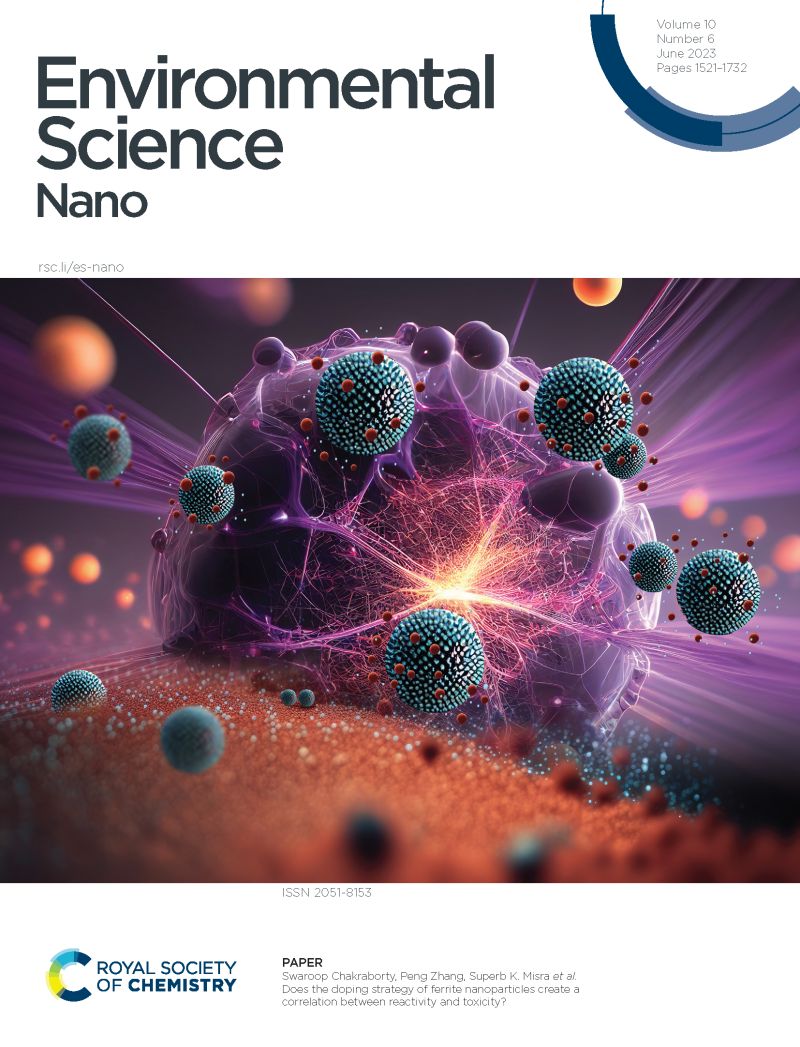微和纳米塑料参考和测试材料的生产、标签和应用
IF 5.8
2区 环境科学与生态学
Q1 CHEMISTRY, MULTIDISCIPLINARY
引用次数: 0
摘要
从环境中提取微纳米塑料(MNPs)所固有的挑战,加上商业上可用的MNPs范围有限,促使越来越多的研究人员生成内部参考和测试MNPs。本综述的第一部分提供了现有MNP生产方法的全面概述,包括自上而下和自下而上的制造技术。比较和对比了不同方法的优缺点,并讨论了优化和控制MNP性能的潜力。还介绍了在生产之前、期间或之后对MNPs进行标记和人工天气的方法,以及将MNPs引入不同介质的适当分散方案。本综述的第二部分侧重于参考和测试MNPs如何在不同类型的研究中实施,分类为毒性,摄取,命运和监测。考虑到需要广泛的属性来完全定义MNPs,我们提出了一组需要根据研究类型进行表征的基本属性。展望未来,我们提出了未来的需求,不仅在创建参考MNPs方面,而且在实验协议方面,这将有助于更好地理解MNPs的行为和影响。总体而言,本综述旨在提供必要的信息,以指导研究人员在决策时选择哪些参考MNPs最适合回答他们的具体研究问题,并作为一个框架,有助于获得可靠的基准数据,这些数据迫切需要就MNPs的命运和风险达成共识。本文章由计算机程序翻译,如有差异,请以英文原文为准。
Production, Labeling, and Applications of Micro- and Nanoplastic Reference and Test Materials
Challenges inherent to the extraction of micro- and nanoplastics (MNPs) from the environment, combined with the limited range of commercially available MNPs, have prompted an increasing number of researchers to generate in-house reference and test MNPs. The first part of this review provides a comprehensive overview of existing MNP production methods, including top-down and bottom-up fabrication techniques. Strengths and weaknesses of different methods are compared and contrasted, and the potential for optimization and control over MNP properties is discussed. Methods to label and to artificially weather MNPs before, during, or after production, as well as appropriate dispersion protocols for introducing MNPs into different media, are also covered. The second part of this review focuses on how reference and test MNPs have been implemented in different types of studies, categorized as toxicity, uptake, fate, and monitoring. Given the wide range of properties needed to fully define MNPs, we propose a set of essential properties that need to be characterized depending on the study type. Looking forward, we suggest future needs, not only in the creation of reference MNPs, but also in experimental protocols that would help to better understand the behavior and impacts of MNPs. Overall, this review aims to provide the necessary information to guide researchers in decision-making regarding which reference MNPs are most appropriate to answer their specific research questions and to serve as a framework that will contribute to obtaining reliable, benchmarked data urgently needed to develop consensus on the fate and risk posed by MNPs.
求助全文
通过发布文献求助,成功后即可免费获取论文全文。
去求助
来源期刊

Environmental Science: Nano
CHEMISTRY, MULTIDISCIPLINARY-ENVIRONMENTAL SCIENCES
CiteScore
12.20
自引率
5.50%
发文量
290
审稿时长
2.1 months
期刊介绍:
Environmental Science: Nano serves as a comprehensive and high-impact peer-reviewed source of information on the design and demonstration of engineered nanomaterials for environment-based applications. It also covers the interactions between engineered, natural, and incidental nanomaterials with biological and environmental systems. This scope includes, but is not limited to, the following topic areas:
Novel nanomaterial-based applications for water, air, soil, food, and energy sustainability
Nanomaterial interactions with biological systems and nanotoxicology
Environmental fate, reactivity, and transformations of nanoscale materials
Nanoscale processes in the environment
Sustainable nanotechnology including rational nanomaterial design, life cycle assessment, risk/benefit analysis
 求助内容:
求助内容: 应助结果提醒方式:
应助结果提醒方式:


